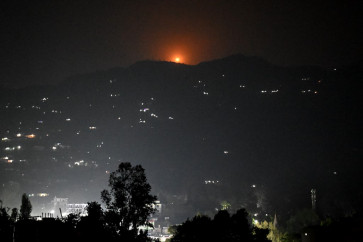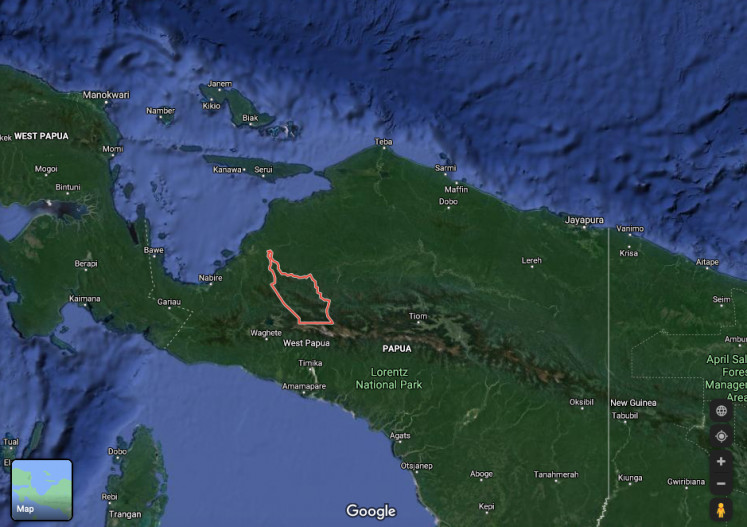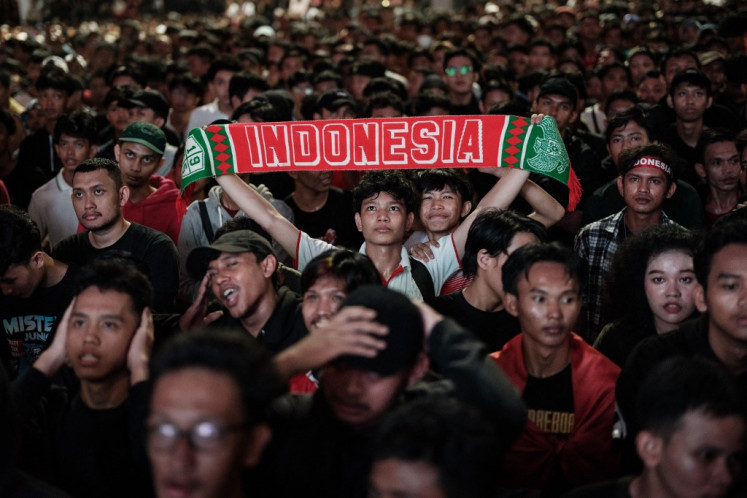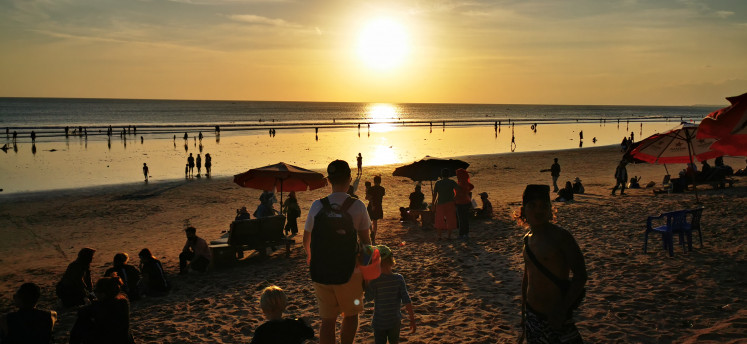Laid-back Rote Island, where the living is easy but the journey there is one long haul
One can practice dolce far niente, the art of doing nothing, in Rote Island
Change text size
Gift Premium Articles
to Anyone

One can practice dolce far niente, the art of doing nothing, in Rote Island. That is probably the best way to enjoy your time, because the living is slow, easy and relaxing on the island.
Not so easy is the journey to get there, at least for those departing from Jakarta.
The long trip begins with a flight to Kupang, the capital of East Nusa Tenggara. Then follows the 20-minute drive from the city to the port. My friends and I were stunned by the breathtaking landscape along the way. The Australasian vegetation, dry land, clear blue ocean, wild monkeys and traditional houses were obviously not our everyday views.
We were the only tourists on the express Bahari ferry when we arrived at the port. Locals kept asking what business we had on the island, as it seemed unusual for non-surfers to visit Rote for a vacation.
I guess they do not realize the magical potential of their island. For me, it is better to keep it that way, ensuring the island remains pure and unspoiled.
During the ferry trip, the air-conditioner was freezing and the television played nonstop religious karaoke music videos at eardrum-splitting volume, only to be followed by a Chinese vampire movie.
Maybe it was a deliberate distraction as we passed through one of the deadliest channels in Asia. Known for its strong currents, Pukuafu channel, the meeting point of Timor Sea and the Indonesian Ocean, has become the burial grounds for many ill-fated seagoers.
The two-and-a-half-hour trip finally finished when our ferry docked at Ba'a port in Rote Ndao. The fresh breeze welcomed us along with ojek (motorcycle taxi) and public minivan, which locals call oto.
After some quick bargaining, we chose a white oto decorated with stickers: A picture of Jesus on its rear window and large font 'Dolarosa' written along its side.
'Good choice, we're on the right path,' giggled my friend.
History has it that Dolorosa was the painful path that Jesus trod while carrying the cross. Our trip with Dolorosa was just as painful. They closed the windows and played incredibly loud, non-stop disco remix.
As much as I called it painful, I would still say that we had spectacular views along the 48-kilometer drive. Thanks to the dry land, the country road was easier to travel.
Royal stopover
We stopped at the King's House, so called because it is the home of the Thie king, Jeremias Arnoldus Messakh, although he actually now lives in Ba'a. It was a typical Rote house but larger, somewhat humid with one big bedroom and a few beds on its mezzanine. It had a nice garden as well.
We did not stay long because we had to find something to eat. We stopped at a restaurant in Nembrala, a fishing village on the southwest coast of Rote Island.
Remember when I said that living in Rote is relaxing? That was what we found in Nembrala, where everything is very laid back here, especially in the afternoon. We stopped at a restaurant called Tessa Lifu,
the only restaurant with an 'open' sign out front. The owner was a forty-something woman with a constant smile on her face.
When we got there with growling stomachs, they only had fried chicken and eggs. It turned out that the restaurant owner first had to buy the chicken and the eggs at a mini-market next door.
It appears to me that the locals apply a life-is-easy philosophy to all sectors. Nobody seemed to be in a hurry, which left us waiting for our food for more than an hour.
An interesting thing about Rote, and this village in particular, is that you see more pigs than dogs. They are everywhere, and even hang out around the beach scrounging for food.
As we finished our late lunch, we looked for available accommodation. We were lucky to get rooms at Anugerah Homestay by the beach, next to the exclusive Nemberala Beach Resort. Basically, we shared the same view but with fewer amenities.
Nemberala Beach is a surfer's paradise. The white sandy beach and clear water are breathtaking. However, at first, we doubted that this site was the famous surfing beach because there were no big waves. In fact, the sea was pretty calm. But then we saw a group of surfers jumping on a boat, some of them paddling, heading out to sea where the waves were.
Surfers we met at the homestay said Nemberala had these legendary waves, considered the second-best in the world after Hawaii. That explains why our remote homestay was fully packed with surfers from Australia, the US and even South America.
Bo'a hosted the Billabong Surfing International Rote Open in 2009, where world-class surfers like Marlon Gerber from Switzerland and Made Widhiarta from Bali battled it out in the final.
After we had checked in, we headed down to Bo'a Beach. This pristine white sandy beach is only 10 minutes from the village. It was picture-postcard beautiful, with a long stretch of golden sands and palm trees, surrounded by golden cliffs. There was practically no one around, which made it even better. The sensation of having our own private beach was priceless.
We returned to the Nemberala Beach Resort several hours later, just in time to catch Nemberala's legendary sunset.
To complete our easy vacation, we wandered around the village. We also went to an open market, open only on Sunday when local farmers and merchants flock in the market to sell their products.
In the afternoon, we went to the neighboring island of N'doa on a rented fishing boat. Villagers still make jewelry by melting down old Dutch coins.
This article was originally published on www.jakpost.travel.









